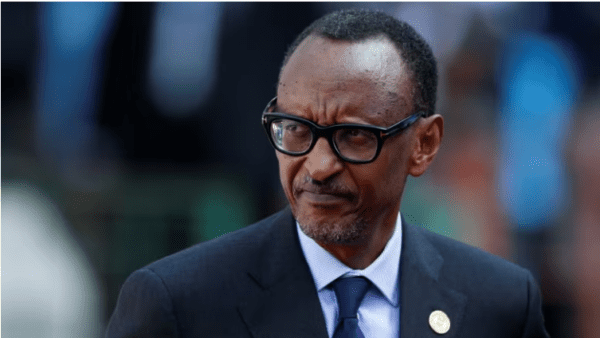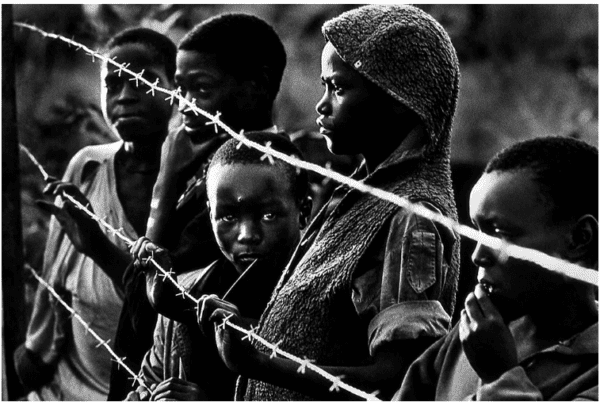Last week marked the 30th anniversary of the Rwandan Genocide, prompting commemorations, remembrances, and tributes. While the genocide took place over a generation ago, its marks still show within Rwanda, the region, and the world. Over the course of 100 days, over 800,000 Rwandans, primarily from the Tutsi minority ethnic group, were killed, while the UN stood by and watched.
The Tutsis had held a privileged position within Rwandan society, as they were used as proxies by Belgian colonizers, allowing the slim minority to gain large swathes of control over the government and society. In 1959, the Hutus revolted, leading to the end of colonization in 1962 and the flight of much of the Tutsi elite to neighboring nations. While in exile, some Tutsis organized into groups aimed at regaining their lost influence in Rwanda with the final goal of returning to the country.
One such group, the Uganda-based Rwandan Patriotic Front (RPF), began to launch attacks against the Hutu-led Rwandan Government in the late 1980s and early 1990s, eventually leading to the outbreak of civil war between the two groups. Over the course of the civil war, the Rwandan Government arrested Tutsis and released propaganda accusing them of aiding the RPF. As the RPF had nevertheless been rather successful during the civil war, the Hutu President of Rwanda, Juvenal Habyarimana, began implementing reforms to aid in the lessening of inter-ethnic conflict. A peace deal was signed in 1993.
Unfortunately, the attempts of Habyarimana and other moderate Hutus to calm tensions with the Tutsis came to an end when the plane carrying Habyarimana, Burundian President Cyprien Ntaryamira was shot down shortly before landing in Kigali, Rwanda’s capital, after completing peace talks in Tanzania. Believing it was the Tutsis and the RPF who had committed the assassination, some parts of the Rwandan armed forces alongside Hutu militia groups began massacring any Tutsi or Moderate Hutu they could find, including the Rwandan Prime Minister. Thus began the genocide; more and more Hutus joined – or were forced to join – killing squads who murdered, raped, and looted anyone or anything perceived to be related to the Tutsis.

Eventually, the RPF, under the leadership of current Rwandan President Paul Kagame, returned to Rwanda and began combatting the Hutu forces. After 100 days of genocide, the RPF seized the capital of Kigali on 4 July 1994, ending the conflict. The defeated Hutu forces and government were either arrested or fled, having stolen from the national treasury and seeking exile in various nations around the world. The following genocide tribunal heard from countless witnesses and convicted many who took part in the genocide and, along with local courts, ensured that the most perpetrators were duly punished.

While memories of the genocide still endure in the minds of many Rwandans today, the country has also been able to move past its troubled history. Under Kagame’s government, ethnic barriers have been all but eliminated and clashes between the Tutsis and Hutus are unheard of in today’s Rwanda. There now even exist so-called “reconciliation villages,” where victims of the genocide live side-by-side with perpetrators, many of whom were released from prison throughout the early 2000s.
Nonetheless, reminders of the genocide are still present. Mass grave sites are continuously being discovered, most recently in January of this year, bringing back painful memories for those who suffered under the genocide. Kagame and his government have also been accused of invading the neighboring Democratic Republic of the Congo in search of Hutus who fled after the end of the genocide. Beginning with a series of invasions in the late 1990s, Rwanda’s continued armed hunt for the remaining perpetrators has been said to have caused millions of deaths through conflict, famine, and disease.
It is clear that Rwanda today is a hugely different country than in 1994; it now has a booming tourism industry and has seen huge improvements in many development indicators such as child mortality, and gender equality, among others. On the other hand, Kagame’s rule has been criticized for silencing dissent and using other authoritarian tactics, despite bringing about peace and stability. This combination has led some to name Rwanda, “the Singapore of Africa,” a comparison many Rwandans take great pride in. Despite these marked advances, there still remain regional tensions and other complications as consequences of the genocide. Nevertheless, remembrance ceremonies of this anniversary have shown just how remarkable Rwanda’s recovery has been.
Cover Image: Photo taken during the United Nations Assistance Mission in Rwanda in 1994 of refugee children at Ndosha camp, Zaire.







